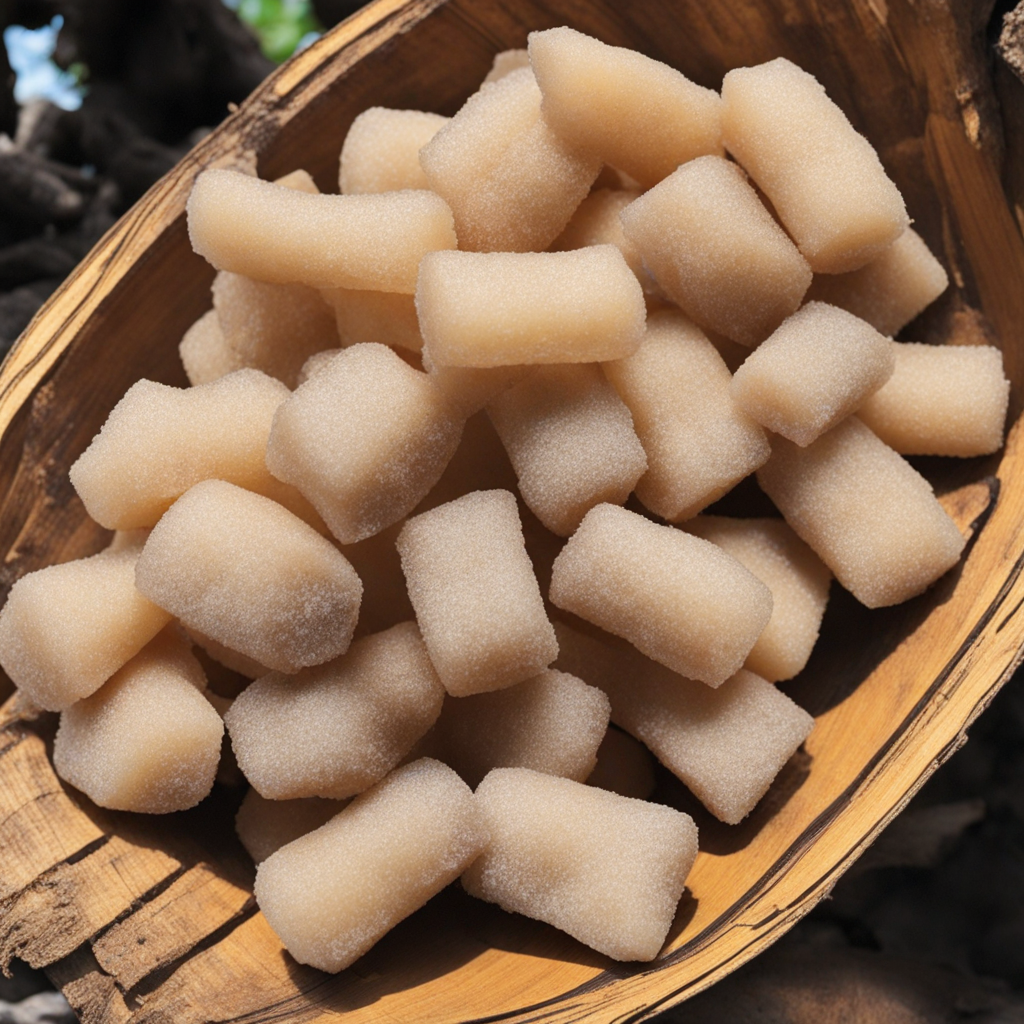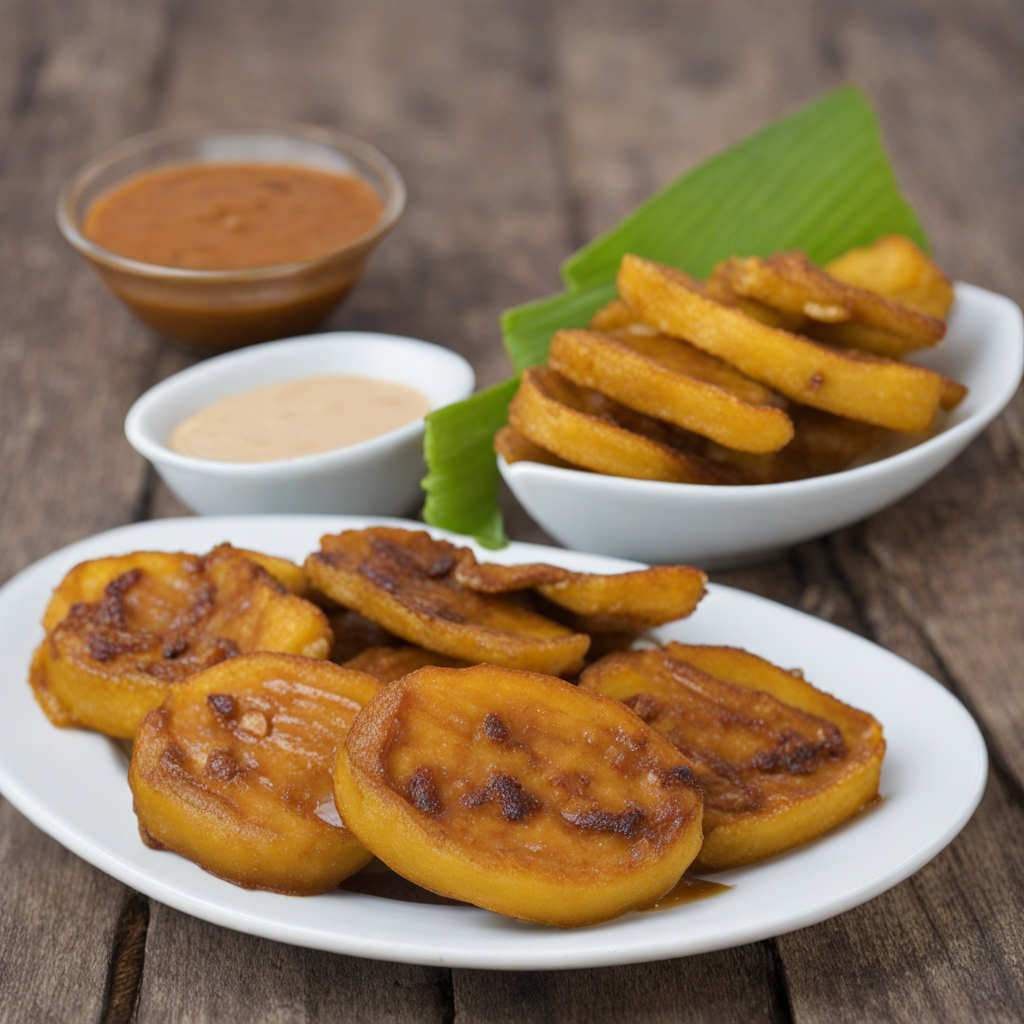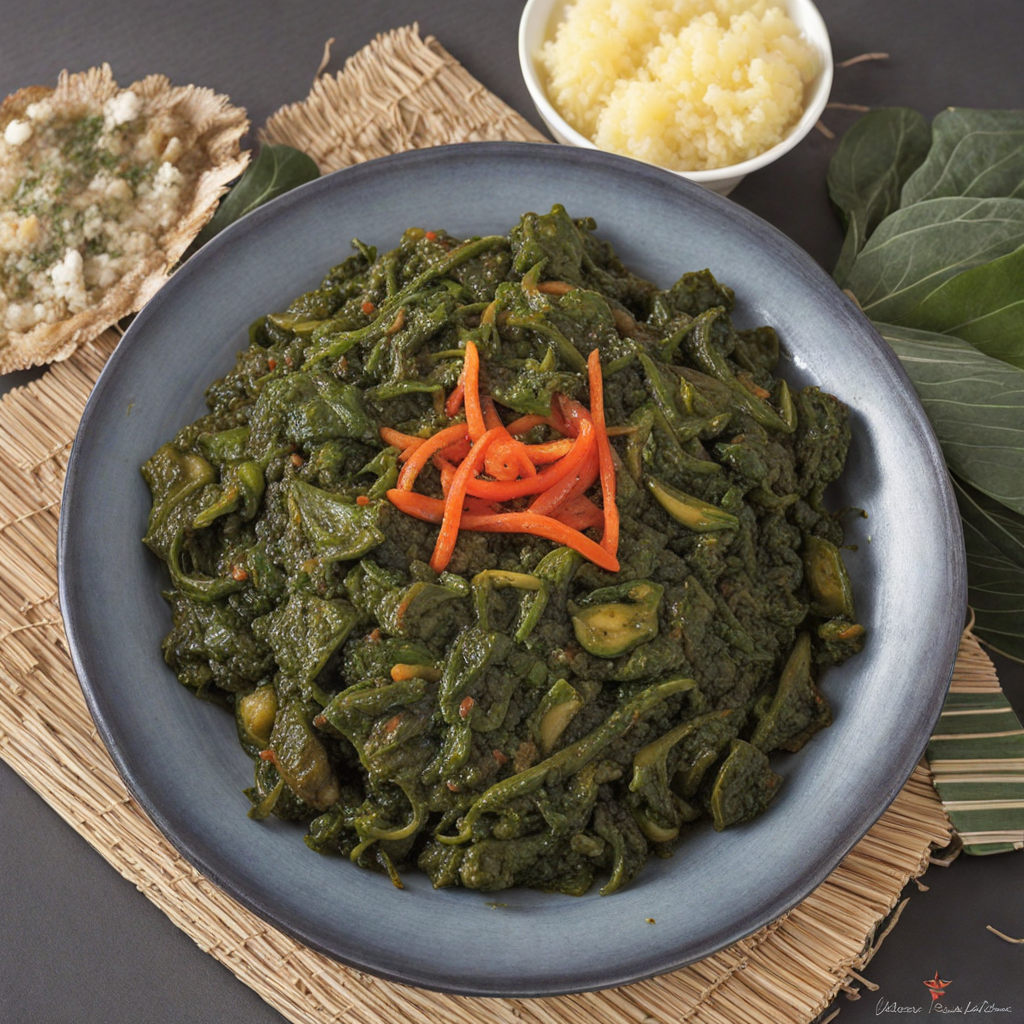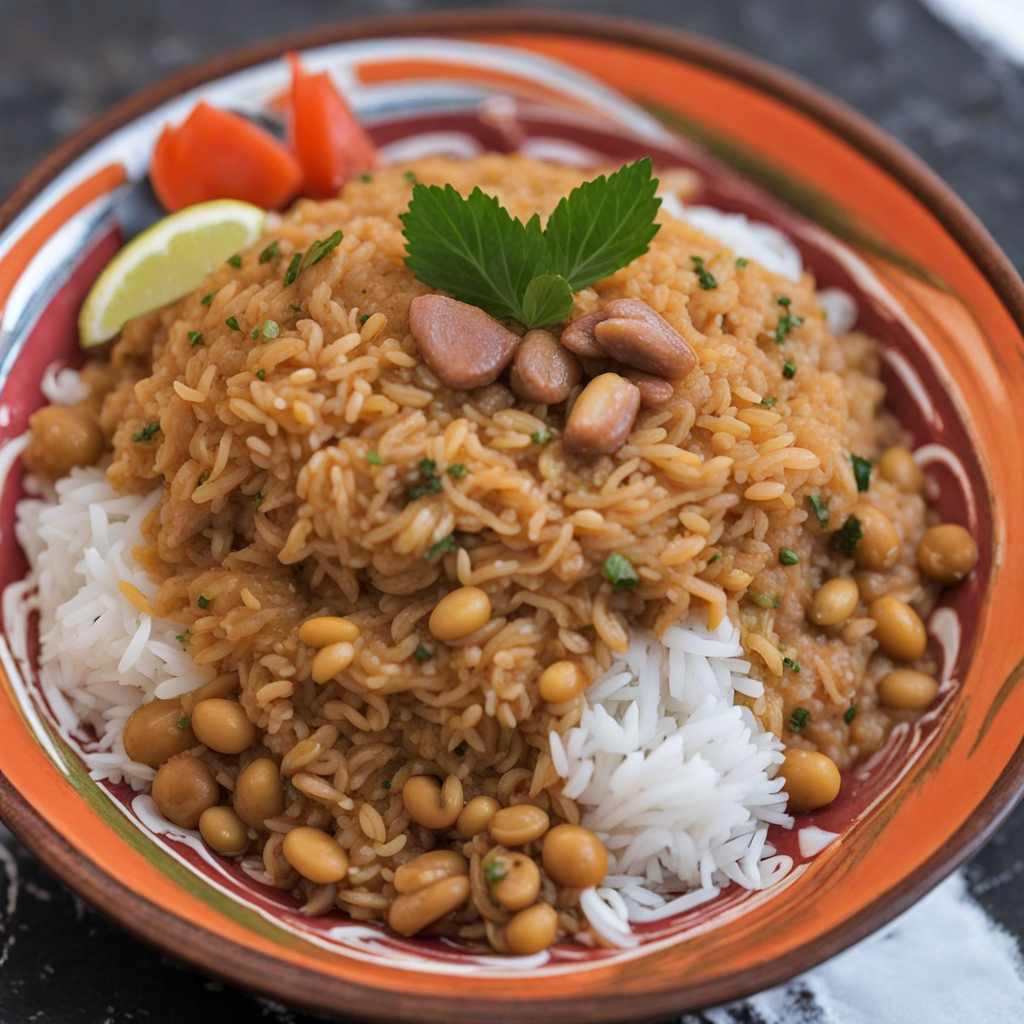Kasripo
Kasripo is a traditional Surinamese dish that beautifully showcases the country's rich culinary heritage. It is primarily made from cassava, a starchy root vegetable that is a staple in many tropical regions. The cassava is grated and then mixed with a variety of ingredients, often including coconut milk, which adds a creamy texture and a subtle sweetness. The dish is typically seasoned with spices such as salt and sometimes even a hint of sugar, creating a delightful balance of flavors that dance on the palate. What sets Kasripo apart is its unique cooking method. The mixture is usually wrapped in banana leaves, which not only imparts a distinctive aroma but also helps to keep the dish moist during the steaming process. Once cooked, the vibrant yellowish hue of the cassava is complemented by the rich, nutty flavor of the coconut milk, making it not only delicious but visually appealing as well. This dish is often served as a side with meats or fish, making it a versatile addition to any meal. In addition to its fantastic flavor, Kasripo carries cultural significance within Surinamese cuisine. It is often enjoyed during festive occasions and gatherings, symbolizing togetherness and the sharing of food. The dish is a testament to the country's diverse influences, reflecting Indigenous, African, and Asian culinary traditions. For those looking to explore new tastes, Kasripo offers a unique window into Suriname's vibrant food culture, inviting you to experience a harmonious blend of textures and flavors that is both comforting and exotic.
How It Became This Dish
Kasripo: A Culinary Gem of Suriname Kasripo, a traditional dish hailing from Suriname, is a vibrant and flavorful representation of the nation’s rich cultural tapestry. This unique dish showcases the influences of Indigenous, African, Dutch, Indian, and Chinese culinary traditions that have mingled over centuries in this small South American country. As we explore the origins, cultural significance, and evolution of Kasripo, we uncover a narrative that reflects the history and diversity of Suriname itself. #### Origins of Kasripo The roots of Kasripo can be traced back to the Indigenous peoples of Suriname, who cultivated crops like cassava, yams, and plantains long before European colonization. These staples formed the basis of many traditional dishes and were often prepared with a variety of local herbs and spices. When the Dutch colonizers arrived in the 17th century, they brought with them new ingredients and cooking techniques that would blend with the Indigenous cuisine. The introduction of African slaves to Suriname during the transatlantic slave trade had a profound impact on the country's culinary landscape. Enslaved Africans brought their own food traditions, which included cooking with nutritious root vegetables and the use of spices and seasonings that were integral to their diets. As a result, Kasripo evolved as a dish that incorporated these local ingredients with the cultural practices of both Indigenous peoples and African slaves. The dish itself is a type of stuffed plantain, typically filled with a savory mix of ingredients such as salted fish, vegetables, and spices. The use of plantains, a staple in many tropical regions, is a nod to the agricultural practices of both Indigenous and African communities. The name “Kasripo” is believed to derive from the Arawak language, reflecting the Indigenous heritage of Suriname. #### Cultural Significance Kasripo is more than just a dish; it is a symbol of Suriname's multicultural identity and the resilience of its people. The preparation and consumption of Kasripo often take place during communal gatherings, celebrations, and festivals, where families and friends come together to share food and stories. It is a dish that unites people from various backgrounds, showcasing the shared culinary heritage that transcends ethnic boundaries. In Suriname, food is an integral part of cultural expression and identity. The preparation of Kasripo often involves traditional cooking methods, such as steaming or baking, which have been passed down through generations. The act of cooking together fosters a sense of community and belonging, reinforcing familial ties and cultural continuity. For many Surinamese, Kasripo is a dish that evokes nostalgia, as it is often associated with childhood memories and family gatherings. Furthermore, the dish has gained recognition beyond Suriname’s borders, especially in the diaspora communities. Surinamese immigrants have carried their culinary traditions with them, introducing Kasripo to new audiences and creating a sense of cultural pride. In this way, Kasripo serves as a culinary ambassador, bridging the gap between different cultures and fostering appreciation for Surinamese heritage. #### Development Over Time As Suriname’s population continued to evolve, so too did the recipe for Kasripo. The arrival of indentured laborers from India and China in the 19th and early 20th centuries introduced new ingredients and flavors to the dish. The Indian influence can be seen in the incorporation of spices such as turmeric and cumin, while Chinese culinary techniques have added nuances to the preparation methods. In contemporary Suriname, Kasripo is often prepared in various ways, reflecting regional differences and personal preferences. While the traditional recipe remains popular, modern interpretations may include the use of different proteins, such as chicken or shrimp, and innovative flavor combinations. Some chefs have even experimented with vegetarian versions, using ingredients like lentils or chickpeas to create a plant-based alternative. The globalization of food culture has also influenced the presentation and availability of Kasripo. In urban areas, one can find restaurants and food stalls serving Kasripo alongside other international dishes, appealing to a diverse clientele. Social media has played a significant role in promoting Surinamese cuisine, allowing for the sharing of recipes, cooking tips, and regional variations of Kasripo. This has led to a resurgence of interest in traditional dishes among younger generations, who are eager to reconnect with their culinary roots. #### Kasripo in Modern Suriname Today, Kasripo is celebrated not only as a beloved comfort food but also as a dish that embodies the spirit of Suriname’s multicultural society. It is commonly served during national holidays, festivals, and family gatherings, making it a staple of Surinamese hospitality. Additionally, it has become a must-try for tourists seeking an authentic taste of Surinamese cuisine. Restaurants specializing in Surinamese food often feature Kasripo prominently on their menus, showcasing the dish’s versatility and appeal. Culinary festivals celebrating Surinamese heritage also highlight the importance of Kasripo, with chefs demonstrating traditional cooking techniques and innovative twists on the classic recipe. Moreover, the increasing interest in sustainable and locally sourced ingredients has led to a resurgence in traditional farming practices among Surinamese communities. Many families are returning to their roots, growing their own cassava, plantains, and spices, which are essential for making Kasripo. This movement not only preserves traditional culinary practices but also promotes environmental sustainability and food security. #### Conclusion Kasripo is a dish that encapsulates the essence of Suriname’s rich culinary heritage. Its origins, rooted in Indigenous and African traditions, reflect the diverse cultural influences that have shaped the nation over centuries. As it continues to evolve, Kasripo remains a symbol of community, identity, and resilience. Whether enjoyed at family gatherings, celebrated in festivals, or served in restaurants, Kasripo is a testament to the enduring legacy of Surinamese cuisine and the vibrant culture that it represents. Through every bite, one experiences not just the flavors of the dish but also the stories and histories that have come together to create this culinary gem.
You may like
Discover local flavors from Suriname







